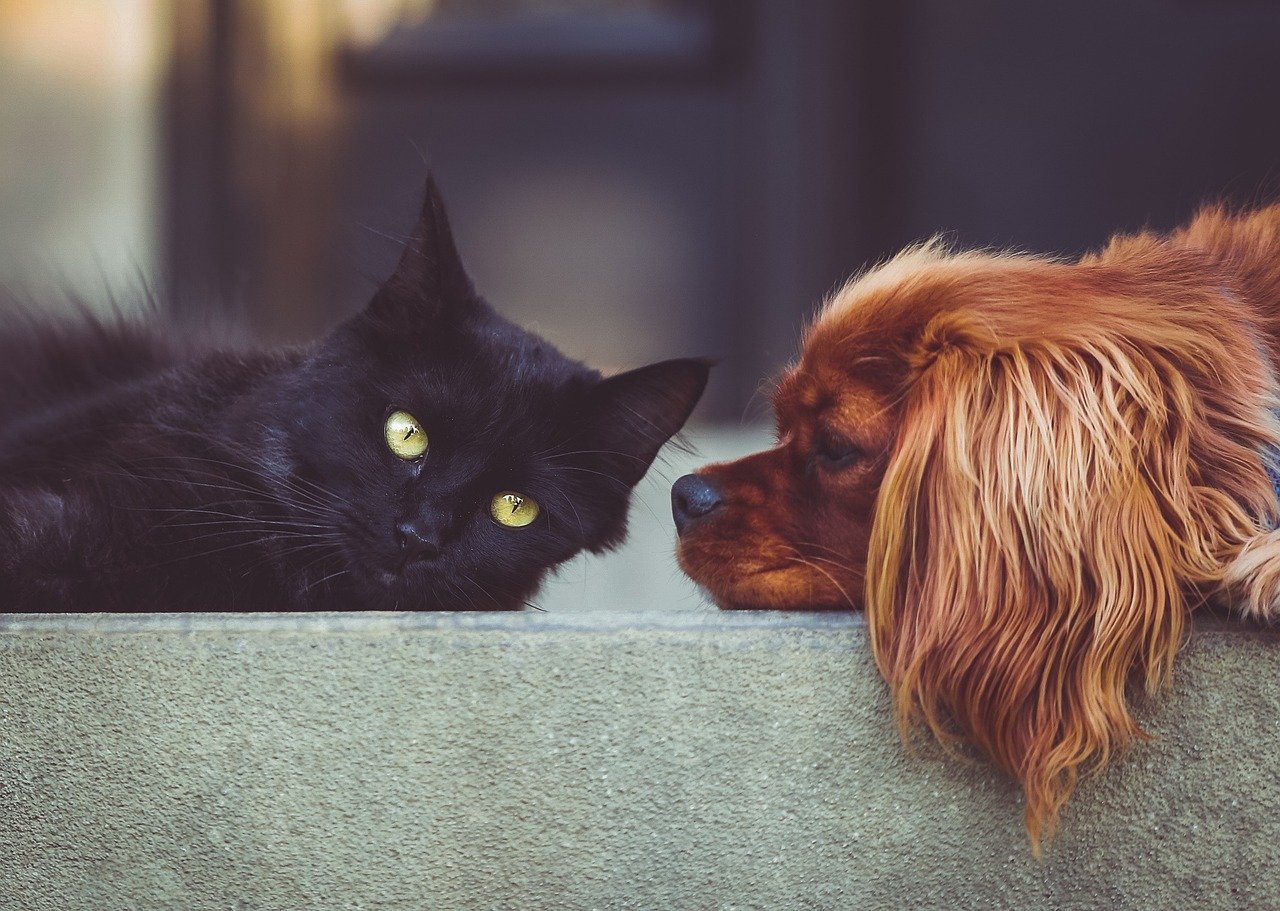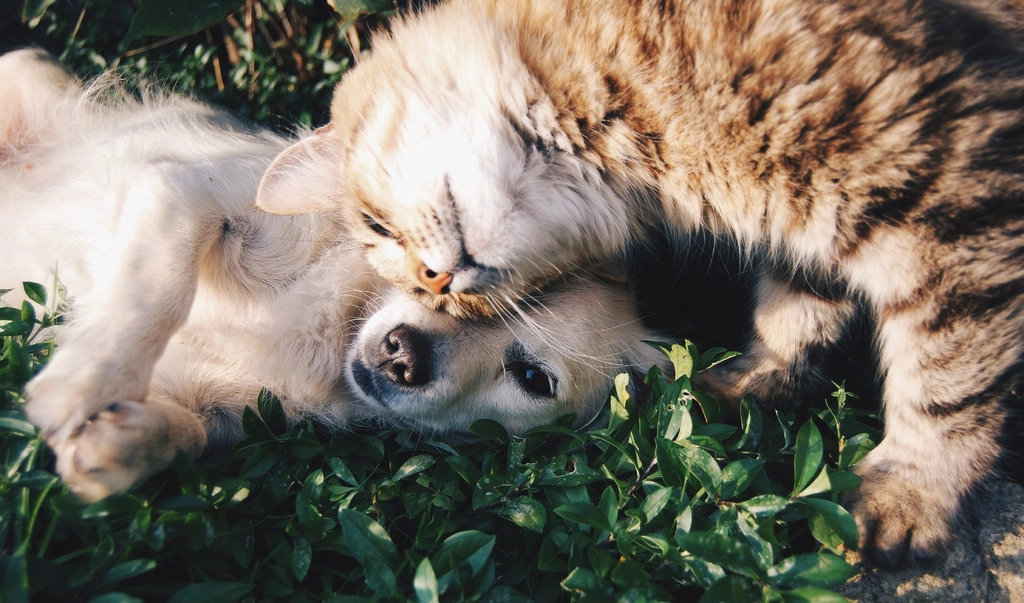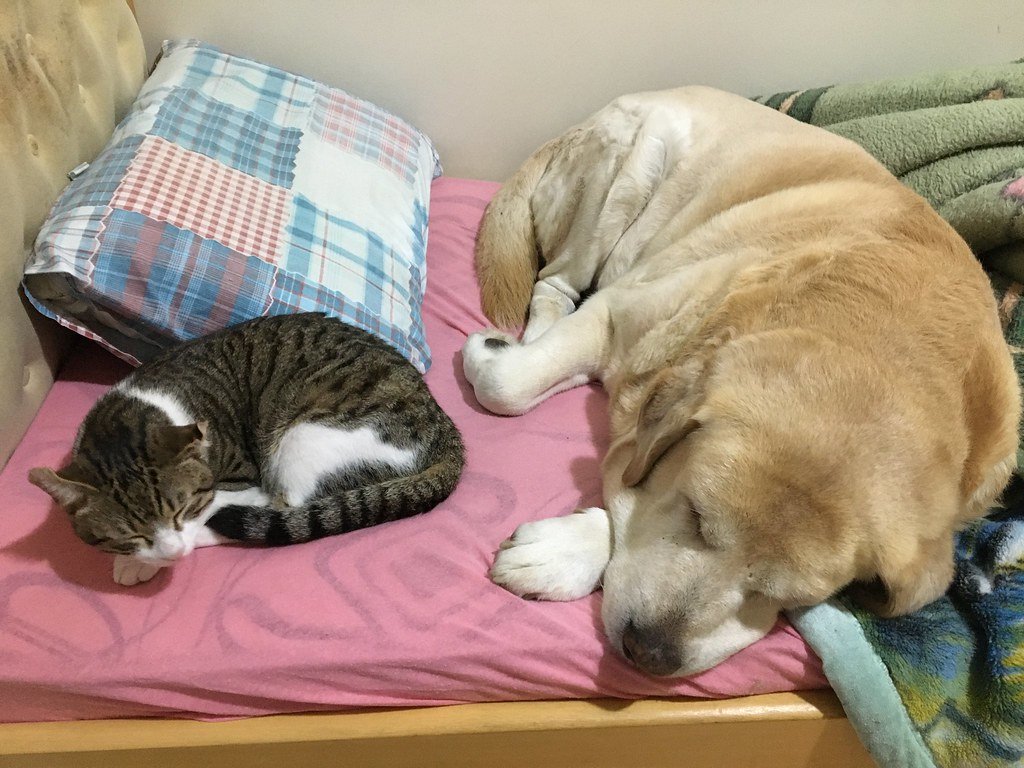Have you ever witnessed a cat and dog in the same room, both eyeing each other with suspicion, and wondered if the age-old rivalry is actually real? The classic image of cats and dogs locked in fierce battle has been a staple of cartoons, movies, and stories for generations. But is there any truth to this stereotype, or is it just another myth passed down through time? If you’ve ever loved both a playful pup and a sassy feline, you might be surprised by what science—and real life—have to say about their relationship.
The Origins of the Rivalry Myth
The idea that cats and dogs are sworn enemies is deeply rooted in our culture. For decades, cartoons have shown dogs chasing cats up trees, while books and movies often paint them as natural-born foes. This rivalry goes back even further—to old folklore and children’s tales—where cats and dogs are cast as opposites in both behavior and temperament. It’s been such a repeated story that many people accept it as fact without question.
However, the reality is a lot more complicated. Most of these stories were written for entertainment rather than accuracy. In truth, cats and dogs have coexisted with humans for thousands of years, sometimes sharing the same household. The myth may have sprung from their different ways of communicating and interacting with the world, which can lead to misunderstandings. Still, the idea of their animosity is more fiction than fact, often exaggerated for laughs and dramatic effect.
Understanding Cat and Dog Behavior
Cats and dogs have very different ways of expressing themselves. Dogs are usually friendly, exuberant, and eager to please, while cats tend to be more reserved and cautious. When a dog wags its tail, it’s usually a sign of happiness, but a cat with a flicking tail is likely agitated or annoyed. These mixed signals can lead to confusion and even conflict when they first meet.
Body language is another area where things go awry. A dog’s approach—bounding up to sniff or play—can be overwhelming for a cat. Meanwhile, a cat’s tendency to hold back and observe can seem unfriendly to a sociable dog. The misunderstanding isn’t because they inherently dislike each other, but because their “languages” are just so different. It’s like two people from different countries trying to communicate without knowing each other’s words or gestures.
Can Cats and Dogs Actually Get Along?
Despite their differences, many cats and dogs do become the best of friends. It’s not uncommon to see them cuddling, playing, and even grooming each other in households where they’ve grown up together or been gently introduced. When pets are socialized from a young age, they learn to interpret each other’s signals and build trust. This process doesn’t always happen overnight—it takes time, patience, and sometimes a little bit of luck.
There are countless heartwarming stories of cats and dogs forming unbreakable bonds. Some will nap side by side, share food bowls, or even team up to create mischief around the house. The key is a gradual introduction and careful supervision during early interactions. Owners who treat each animal as an individual and respect their boundaries are far more likely to see friendship blossom instead of rivalry.
Why Do Some Cats and Dogs Fight?
Conflict does happen, and sometimes it can look dramatic. But often, it’s not about species rivalry—it’s about territory, resources, or misunderstandings. A cat might swat at a dog that’s gotten too close to its favorite resting spot, or a dog may bark at a new feline intruder. Other times, play can escalate if one pet gets too rough or if they don’t know how to read each other’s cues.
Sometimes, specific breeds or personalities might make things trickier. For example, some dogs have a strong prey drive and may chase smaller animals, while some cats are particularly timid or territorial. These mismatches can cause tension, but they’re not universal rules. With patience, training, and sometimes a little intervention, most disagreements can be managed and even prevented.
The Role of Owners in Fostering Peace

Pet owners play a huge part in shaping the relationship between their cats and dogs. A careful introduction can make all the difference. Experts recommend giving each animal their own space at first, letting them get used to each other’s scent, and supervising early meetings. Treats, toys, and lots of praise for calm behavior can help both animals associate each other with positive experiences.
It’s also important for owners to recognize the signs of stress or discomfort in both pets. If a cat is hiding or a dog is barking nonstop, it might be time to slow things down. Setting up high places for cats to escape or safe zones for dogs can help everyone feel secure. When owners invest the time to understand and respect their pets’ needs, peaceful coexistence—and even friendship—is much more likely.
Real-Life Examples of Cat and Dog Friendships

There are countless examples of cats and dogs living in harmony, and sometimes even becoming inseparable companions. Stories from shelters and households around the world show cats curling up with dogs for naps, dogs protecting their feline friends, and both species playing together like siblings. Some viral videos feature cats and dogs teaming up for silly antics, reminding us all that friendship knows no boundaries.
Even in homes where there was initial friction, many pet owners report a gradual thaw. Often, patience and consistent routines lead to surprising transformations. A shy cat might eventually greet a once-boisterous dog at the door, or a nervous dog might learn to respect the cat’s personal space. These real-life friendships prove that the “enemies” label doesn’t hold up under close inspection.
Tips for Helping Cats and Dogs Get Along

For pet owners hoping to foster peace between cats and dogs, there are some tried-and-true strategies. Start with slow introductions—keep them separated at first, allowing them to sniff each other under a door or through a baby gate. Use treats and positive reinforcement to reward calm, friendly behaviors. Make sure each pet has their own safe spaces, like a cozy cat perch or a dog bed.
Pay attention to each animal’s body language, and don’t force interactions if either seems scared or aggressive. Consistency is key; keep routines predictable so neither pet feels unsettled. Sometimes, enlisting the help of a professional trainer or behaviorist can make a big difference, especially if early meetings are rough. Above all, patience and understanding go a long way in bridging the gap between these two beloved species.
The idea that cats and dogs are natural enemies is more myth than reality. While their instincts and communication styles differ, many cats and dogs can form deep, affectionate bonds when properly introduced and given time to adjust. Like any relationship, trust and compatibility matter far more than species. With patience, guidance, and mutual respect, cats and dogs don’t just coexist—they can become the best of friends.

Born and bred in South Africa, a Capetonian at heart. Amy-Leigh’s love for nature and animals was inherited from her Dad. He loves taking the family on road trips to experience nature at its finest; Amy-Leigh’s favourite being whale watching in Hermanus and spotting Kudu along the West Coast. Amy-Leigh holds a BA in English Literature and Communication Studies.





